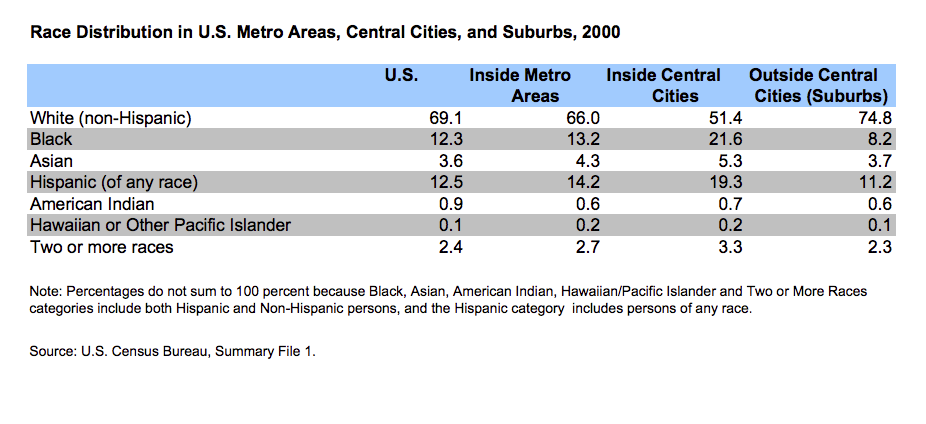
Minority Suburbanization
Date
May 1, 2002
Author
(May 2002) The suburbs of America’s cities are often seen as the bastions of white, middle-class families. But increasingly, America’s suburbs reflect the growing diversity in the United States as a whole.

In the nation’s largest metropolitan areas (those with populations exceeding 500,000), minorities accounted for 27 percent of the suburban populations in 2000, compared with 19 percent in 1990. The rapid increase in minority suburban populations was concentrated in the so-called “melting-pot metros” — New York, Los Angeles, Chicago, San Francisco, Miami, and other immigrant gateways. Minority population growth in these areas is driven by increases in the Asian and Hispanic populations, since the majority of blacks living in suburban areas still tend to be in the largely black-white metro areas in the South. Many of the metro areas experiencing marked increases in their minority suburban populations saw decreases in their white suburban populations.
There was substantial growth in the number of minorities in the West and Southwest, areas with relatively high levels of international immigration. In these metropolitan areas, minority population growth accounted for the majority of suburban population gains.
Despite the minority population increases in suburban areas, minorities still account for a greater share of the population in central cities than in the suburbs. In 2000, Hispanics accounted for 11 percent of the U.S. population in the suburbs and 19 percent of the population in central cities. Blacks made up 8 percent of the suburban population, and 22 percent of the central city population. Non-Hispanic whites, on the other hand, accounted for about three-fourths of the suburban population in 2000, but just over half of the population in central cities.
Source: Frey, William H., “Melting Pot Suburbs: A Census 2000 Study of Suburban Diversity,” Washington, DC: The Brookings Institution, Census 2000 Series, 2001.
